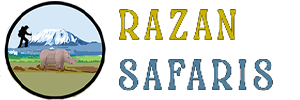The Umbwe Route is widely regarded as the most challenging route to the summit of Mount Kilimanjaro.
Overview
Length: Approximately 50 kilometers (31 miles)
Duration: Typically 5 to 7 days
Starting Altitude: 1,600 meters (5,249 feet) at Umbwe Gate
Summit Altitude: 5,895 meters (19,341 feet) at Uhuru Peak
Climbing Profile: Steep, direct, and rapid ascent with limited acclimatization opportunities
Key Challenges
Steep Initial Ascent:
The Umbwe Route starts with an extremely steep ascent through dense rainforest. This rapid gain in altitude can be physically demanding and leaves little time for acclimatization.
Impact: Climbers often experience early symptoms of altitude sickness due to the swift altitude gain.
Limited Acclimatization:
The route’s design involves a fast and direct climb, which does not allow for gradual acclimatization.
Impact: The lack of gradual altitude gain increases the risk of altitude sickness, making it challenging for climbers to adapt to the lower oxygen levels.
Challenging Terrain:
The Umbwe Route features rugged and rocky paths, especially after the rainforest zone. The trail requires careful navigation through exposed ridges and steep sections.
Impact: The difficult terrain demands high physical fitness and strong mental resilience. Climbers need to be prepared for strenuous hiking and potentially scrambling.
Harsh Weather Conditions:
As climbers ascend quickly, they encounter a variety of weather conditions, from humid rainforests to cold alpine deserts.
Impact: The rapid transition through different climatic zones can be tough to manage without adequate gear and preparation.
Summit Night:
Like other routes, the final push to the summit starts around midnight, making the ascent in darkness and cold temperatures.
Impact: The combination of physical exhaustion, high altitude, and challenging conditions make the summit night particularly grueling on the Umbwe Route.









Rely on BWER Company for superior weighbridge solutions in Iraq, offering advanced designs, unmatched precision, and tailored services for diverse industrial applications.